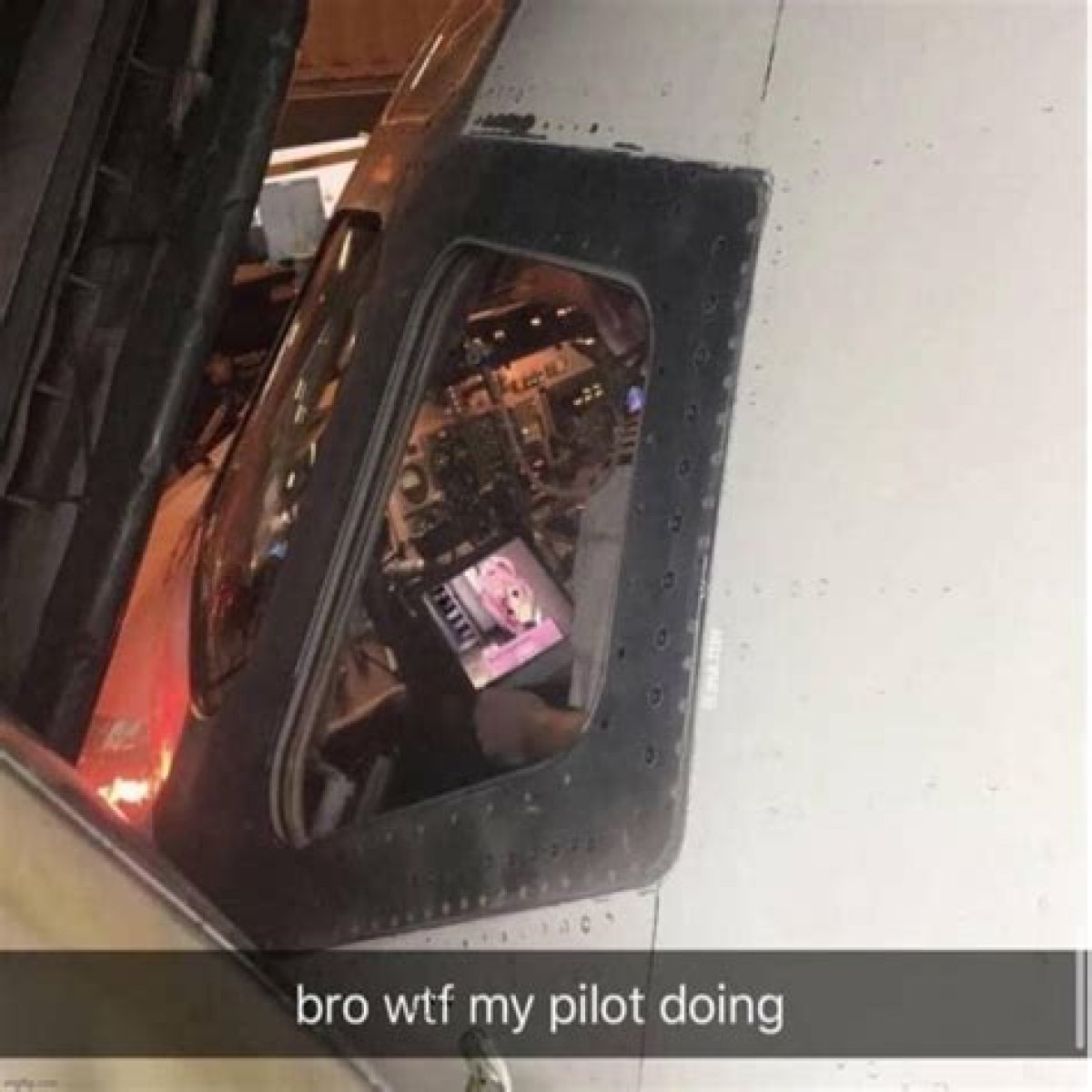In the world of aviation, there are moments that can leave passengers and crew alike holding their breath, moments where everything seems to go wrong, often leading to the phrase, "the pilot done messed up." This phrase, filled with a mix of humor and disbelief, encapsulates the unexpected twists and turns that can occur while soaring through the skies. From miscommunications to technical failures, the aviation industry is no stranger to incidents that can make even the most seasoned flyers uneasy.
As we delve into the captivating world of aviation mishaps, we will explore some notable incidents where the phrase "the pilot done messed up" became a reality. These stories not only highlight the challenges faced by pilots but also remind us of the importance of training, communication, and quick thinking in high-pressure situations. Whether it’s a near miss, a misjudged landing, or a communication breakdown, the repercussions can be far-reaching.
In this article, we will dive deep into the lives of pilots who have found themselves in sticky situations, analyze what went wrong, and reflect on the lessons learned. By examining these incidents, we can better understand the complexities of flying and the human element that plays a crucial role in aviation safety.
- What Are Some Famous Incidents Where the Pilot Done Messed Up?
- Who Was Involved in These Mishaps?
- What Causes a Pilot to Mess Up?
- How Do Pilots Recover from Mistakes?
- What Are the Long-Term Effects of Messing Up?
- What Can Be Done to Prevent Future Mistakes?
- How Has the Aviation Industry Changed Since These Incidents?
- What Should Passengers Know About Pilot Errors?
What Are Some Famous Incidents Where the Pilot Done Messed Up?
Throughout aviation history, several incidents have stood out and captured the public's attention. Here are a few notable examples:
- United Airlines Flight 553
- Air France Flight 358
- British Airways Flight 5390
- Asiana Airlines Flight 214
Who Was Involved in These Mishaps?
Each of these incidents involved dedicated pilots, co-pilots, and crew members who faced critical situations. Despite their training and experience, unexpected factors led to decisions that would ultimately define their careers. Here’s a brief overview of a few key figures:
| Name | Flight | Incident Date | Outcome |
|---|---|---|---|
| Captain H. M. Sullenberger | US Airways Flight 1549 | January 15, 2009 | Successful ditching on the Hudson River |
| Captain Eric Moody | British Airways Flight 9 | June 24, 1982 | Successful emergency landing in Jakarta |
| Captain Chesley "Sully" Sullenberger | US Airways Flight 1549 | January 15, 2009 | All passengers survived |
What Causes a Pilot to Mess Up?
Many factors can lead to a pilot making a mistake. Some common causes include:
- Distractions in the cockpit
- Inadequate training or experience
- Technical malfunctions
- Poor communication with air traffic control
How Do Pilots Recover from Mistakes?
When a pilot faces an unexpected situation, recovery depends on their training, quick decision-making, and the support of their crew. Here are some steps pilots take to recover:
- Assess the situation calmly.
- Communicate with the crew and air traffic control.
- Implement emergency procedures if necessary.
- Land safely and debrief afterwards.
What Are the Long-Term Effects of Messing Up?
When a pilot makes a mistake, the consequences can extend far beyond the immediate situation. Some long-term effects include:
- Impact on the pilot's career and reputation
- Increased scrutiny from regulatory bodies
- Changes in airline policies and procedures
- Emotional and psychological repercussions for the crew
What Can Be Done to Prevent Future Mistakes?
Preventative measures are crucial in aviation to minimize the risk of errors. Here are some strategies:
- Regular training and simulation exercises
- Improved communication protocols
- Technological advancements in cockpit instruments
- Emphasis on teamwork and crew resource management
How Has the Aviation Industry Changed Since These Incidents?
Each time a pilot done messed up, it often serves as a wake-up call for the aviation industry. The lessons learned from past mistakes have led to significant changes, including:
- Stricter training requirements for pilots
- Enhanced safety regulations
- Increased focus on mental health and well-being
- Technological innovations that assist in decision-making
What Should Passengers Know About Pilot Errors?
For passengers, understanding the complexities of aviation can ease anxiety regarding pilot errors. Here are some key points to remember:
- Most pilots are highly trained professionals.
- Incidents are rare, and safety measures are in place.
- Communication between crew and passengers is vital.
- Staying informed can help alleviate fears.
In conclusion, while the phrase "the pilot done messed up" can evoke a chuckle or a gasp, it is a reminder of the inherent risks involved in aviation. By learning from past mistakes, the industry continues to evolve and improve, ensuring that passengers can fly with confidence and safety.
Exploring The Impact Of American Me Scenes On CinemaCelebrating The Beauty Of Bantu Curvy WomenThe Ultimate Guide To The Best Roast Dinner In London
